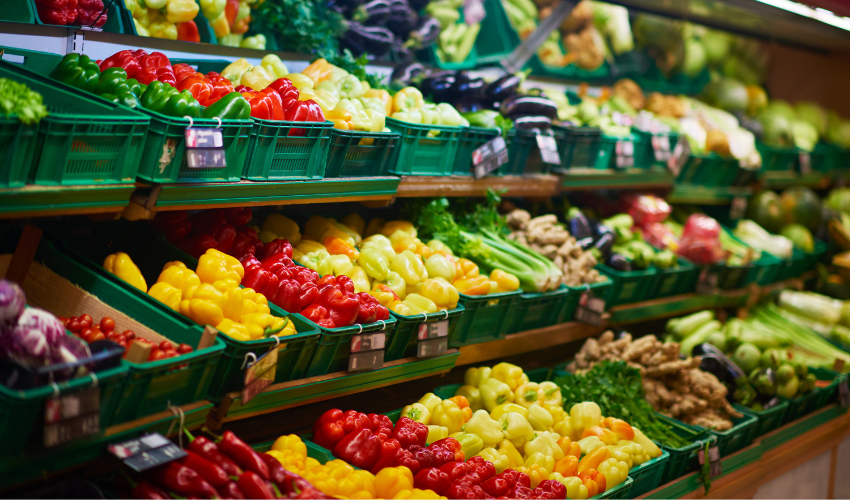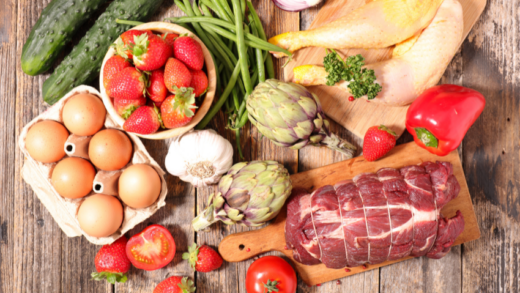Eating seasonal fruits and vegetables has numerous benefits, both for our health and the environment. By consuming produce that’s in season, we support local farmers, reduce our carbon footprint, and enjoy the full flavor and nutritional value of these fresh ingredients. In this article, we’ll explore some of the most popular seasonal fruits and vegetables and share tips on how to incorporate them into your daily diet.
Why Choose Seasonal Fruits and Vegetables?
Nutritional Value
- Seasonal produce is picked at its peak ripeness, making it more nutrient-dense than out-of-season produce.
- Eating a variety of fruits and vegetables in season provides a range of vitamins, minerals, and antioxidants necessary for good health.
- Seasonal produce is typically fresher and hasn’t traveled as far, meaning it retains more of its nutritional value.
Environmental Impact
- By choosing seasonal fruits and vegetables, we support local farmers and reduce our reliance on imported produce.
- Transporting out-of-season produce has a significant carbon footprint and contributes to greenhouse gas emissions.
- Eating locally and seasonally reduces the need for preservatives, chemicals, and packaging, making it a more sustainable choice.
Popular Seasonal Fruits

Apples
- Apples are in season from late summer through early winter.
- They’re packed with fiber, vitamin C, and antioxidants.
- Apples are versatile and can be eaten raw, cooked, or baked into desserts.
Berries
- Strawberries, raspberries, blackberries, and blueberries are in season in the summer.
- Berries are low in calories and high in fiber, vitamin C, and antioxidants.
- They’re perfect for adding to smoothies, oatmeal, or salads.
Oranges
- Oranges are in season from winter to early spring.
- They’re rich in vitamin C and fiber, making them an excellent immune-boosting fruit.
- Oranges can be eaten on their own, juiced, or added to salads or desserts.
Popular Seasonal Vegetables

Kale
- Kale is in season from fall to early spring.
- It’s a nutritional powerhouse, packed with vitamins A, C, and K, as well as fiber and antioxidants.
- Kale can be eaten raw in salads, sautéed, or blended into smoothies.
Sweet Potatoes
- Sweet potatoes are in season from fall to winter.
- They’re an excellent source of fiber, vitamins A and C, and antioxidants.
- Sweet potatoes can be baked, roasted, or mashed for a delicious side dish.
Squash
- Squash is in season in the fall.
- It’s high in vitamins A and C, as well as fiber and antioxidants.
- Squash can be roasted, sautéed, or added to soups and stews.
FAQs about Seasonal Fruits and Vegetables
When are fruits and vegetables in season?
- The specific season varies depending on the fruit or vegetable and the region, but in general, most fruits and vegetables have a specific season when they’re at their peak ripeness.
Can I find seasonal produce year-round?
- While some produce may be available out of season due to importation or cold storage, it’s best to focus on buying and consuming produce when it’s in season to get the maximum flavor and nutritional value.
How do I choose the best seasonal produce at the grocery store?
- Look for locally grown fruits and vegetables, which are more likely to be in season and fresher.
- Choose produce that’s firm, fragrant, and free of bruises or blemishes.
- Check for signs of ripeness, such as color, aroma, and texture.
How can I preserve seasonal produce for later use?
- You can freeze, can, or pickle fruits and vegetables to extend their shelf life.
- Some produce, such as tomatoes or peaches, can be dried to preserve them.
- You can also make jams, jellies, or sauces with seasonal produce to enjoy throughout the year.
What are some easy ways to incorporate seasonal produce into my meals?
- Add seasonal fruits and vegetables to smoothies, salads, or stir-fries.
- Roast, grill, or sauté vegetables as a side dish or main course.
- Use seasonal produce in baking, such as adding apples or pumpkin to muffins or bread.
Conclusion
Eating seasonal fruits and vegetables is a simple and delicious way to support local farmers, protect the environment, and nourish your body with essential nutrients. By incorporating these fresh ingredients into your diet, you’ll discover a world of flavors and reap the many benefits of a healthy, sustainable lifestyle. So next time you’re at the grocery store or farmer’s market, don’t forget to look for the “seasonal fruits and vegetables” section and enjoy the taste of nature’s bounty.






















